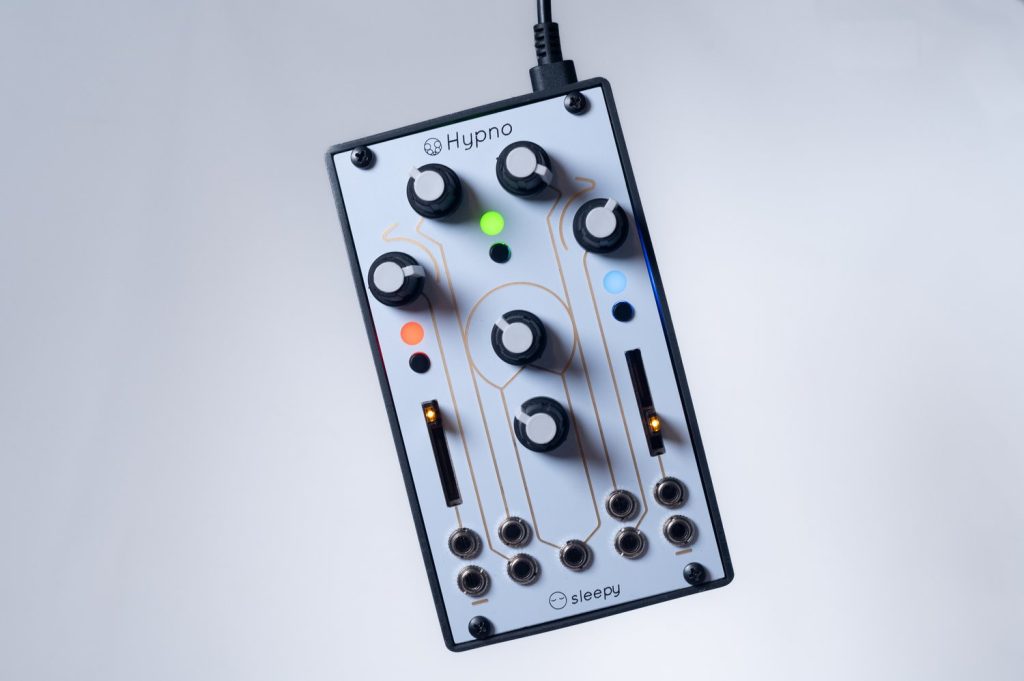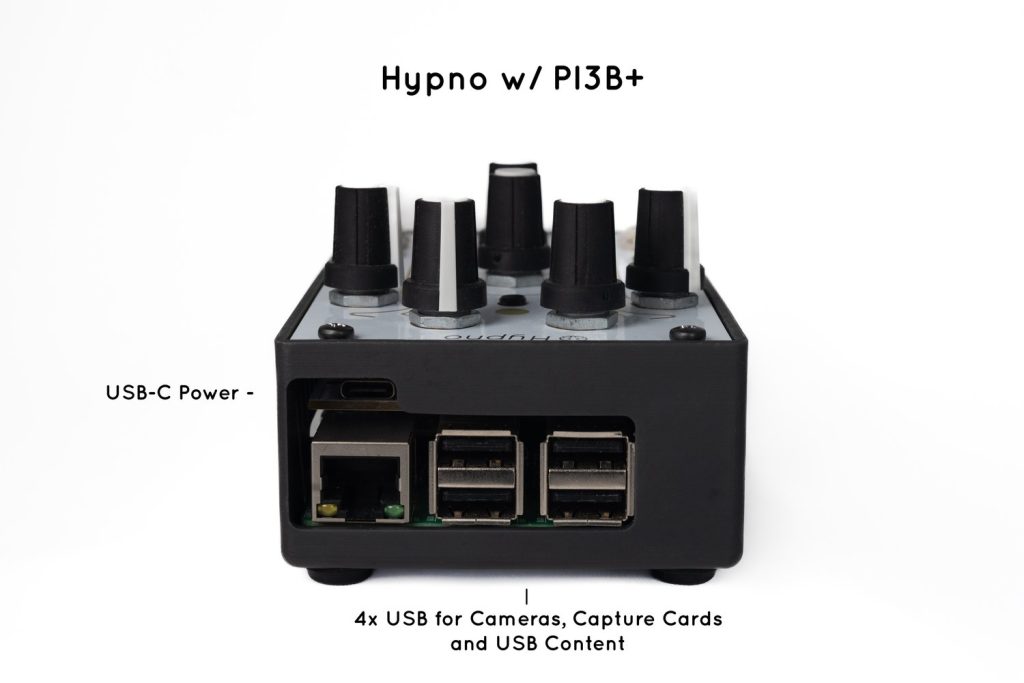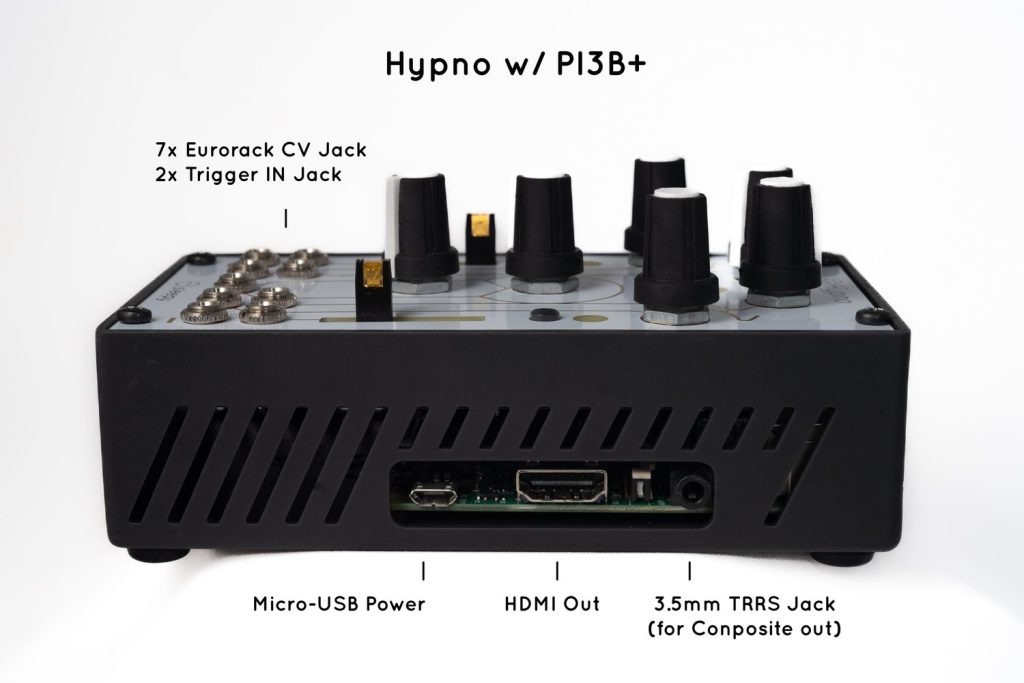When you press and hold buttons A or C, they allow you to further change the attributes of the two respective video oscillators. That is by pressing and holding A, you affect the first oscillator, while pressing and holding C affects the second oscillator. The manual for the Hypno calls this Shape Pages, but I will call this Mod Mode, as the settings that are accessed through this method essentially modulate the oscillator. For those of you who are new to the concept of modulation, we can simplify the concept for the Hypno, and state that modulation makes the images move.
When pressing and holding A or C, the functions mirror each other. For instance, when you hold down button A, slider A controls the scrolling of the shape. However, when you hold down button C, you would now using slider B to do the same affect. Thus, when describing various functions, I will try to describe slider and dial positions in relationship to the button being held, while also putting the exact slider or dial in parenthesis in order to be clear.
So, as already stated, the slider on the same side of the button controls the scrolling of the shape (slider A for button A, slider B for button C). The dial that is closest to the button (dial A for button A, dial D for button C) changes the speed at which the shape rotates. The top dial on the same side as the button (dial B for button A, dial C for button C) controls the amount of modulation for polarization or for Y (vertical) scrolling. In the later case, the twelve o’clock position on the dial indicates no scrolling, while moving the dial to the left causes the shape to scroll down, while moving the dial to the right causes the shape to scroll up.
The the top dial on the opposite side as the button (dial C for button A, dial B for button C) controls the amount of fractal modulation. The dial on the opposite side of the button (dial D for button A, dial A for button C) controls the amount of fractal drift, or if fractal modulation is off, the amount of mirroring or repetition. The slider on the opposite side of the button (slider B for button A, slider A for button C), controls the amount of modulation sent the selected oscillator to the other oscillator (A to B or B to A). The top dial (E) sets the color saturation for the selected oscillator (ranging from white fully saturated). Finally, the lower dial (F) sets the hue offset from the root hue setting from performance mode.
As we get further into modulation, it is very possible to make settings in modulation mode that you find difficult to impossible to undo or un tangle. Rebooting the Hypno by turning it off and turning it back on again, can allow you to reset it, but often dealing with the lack of predictability is part of the process. That being said, if you want to feel more in control of the output, change the settings in modulation mode slowly and change only one setting at a time, while noticing the visual change that occurs with that setting change.
A silent video demonstration of most of the options in modulation mode on the Hypno.
Here’s a Sleepy Circuits quick guide describing how to control color using a combination of Performance and Modulation Modes . . .
video by Sleepy Circuits
Likewise, here’s a Sleepy Circuits quick guide showing how fractal modulation is achieved in Modulation Mode . . .
video by Sleepy Circuits
Using the Hypno 4: Feedback Modes / Feedback Modulation Mode



